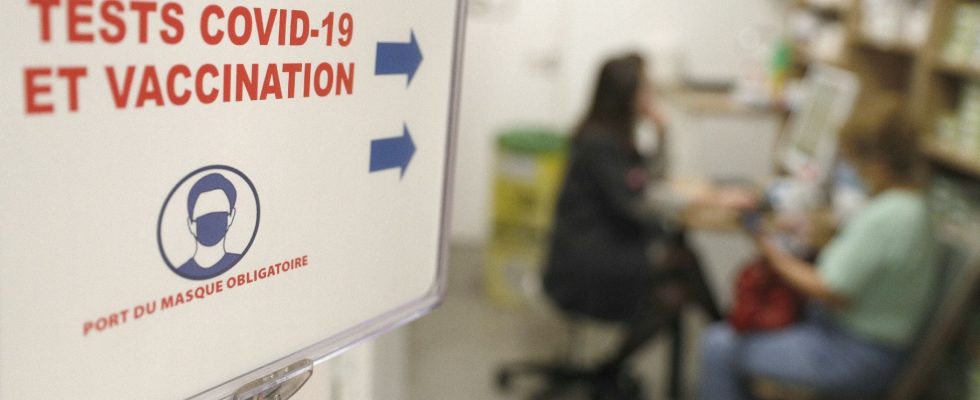As the end-of-year holidays approach, the Covid-19 epidemic is on the rise again in France. According to the latest data published by Public Health France on Wednesday December 6, activity linked to Covid-19 in community medicine and hospitals was “increased slightly, particularly among those aged 65 and over”. In medical biology laboratories, nearly 28,000 new cases were declared, compared to 22,000 the previous week. And the positivity rate reached 27.1%. That’s a little more than one in four people tested.
Samples taken from wastewater from twelve wastewater treatment plants in the country also reveal “a strong increase (+ 24%) in the detection of SARS-CoV-2” the week of November 27 compared to the previous week. Which “testifies to active circulation of the virus in France”, indicates the public health agency. Since October, Public Health France has integrated wastewater monitoring into epidemic indicators supposed to measure the rate of acute respiratory infections.
All these elements demonstrate “a clear epidemic resumption”, recognizes Mircea Sofonea, lecturer in epidemiology and the evolution of infectious diseases at the University of Montpellier. “Nothing surprising, however, in the appearance of this new ascending phase, since the virus is transmitted better when it is cold,” comments Bruno Lina, virologist at Lyon University Hospital and head of the National Virus Reference Center for Respiratory Infections. “Since the pandemic, we have known that this virus will remain among the viruses with respiratory infections,” he continues.
A new variant linked to the increase in cases
In addition, among the reasons that can explain such a jump in Covid-19 cases, Mircea Sofonea points to the appearance of a sub-variant of Omicron, called JN.1. “This variant has the same genetic background as BA.2.86, identified during the summer and relatively studied because it presented a remarkable number of mutations, indicates the researcher. It presents a transmissibility advantage of 60% to 80%”.
At the end of November, JN.1 represented 30% of the viruses sequenced in France, compared to 23% a week earlier, according to data from Public Health France. In its latest analysis of the risks associated with variants, published in mid-November, the health agency estimated that neither BA.2.86 nor JN.1 displayed a “worrying signal”.
“According to the latest analyses, JN.1 does not present any risk, confirms Bruno Lina. There is no marker which shows that it has more virulence. In reality, it behaves like all the other variants of ‘Omicron: it is capable of a very high level of transmission, but does not cause a serious form in people who do not present a risk factor. An observation shared by Professor Matthieu Revest, infectious disease specialist at Rennes University Hospital. “This variant escapes our immune response much more. But this has not, for the moment, had a major effect on hospitalizations.”
Difficult projections
What to expect in the coming weeks? As the end-of-year holidays approach, with increasingly cold temperatures and recurring situations of promiscuity, scientists have no doubt that the spread of the virus will continue. However, more precise projections are difficult to determine. “At present, I cannot say whether the peak of the wave will be reached before or after Christmas Eve, regrets Mircea Sofonea. We no longer have data as precise as two years ago to measure the size of the wave.”
“The question is rather whether this increase in contamination has an impact on the health system. This is not yet the case. Much less than bronchiolitis,” explains Professor Revest, who nevertheless recalls the importance of keeping the habit of barrier measures. “Now is the time to strengthen prevention measures: vaccinate people for whom it is indicated, have the reflex to wear a mask if you are sick. All of these actions can prevent us from problems in the coming weeks,” argues for his part Pierre Tattevin, vice-president of the French-speaking infectious pathology society (Spilf).
However, more than two months after the start of a new vaccination campaign, coverage is far from complete. According to data from Public Health France, less than 25% of those over 65 have received a new dose, and less than 10% of health professionals. “It is undoubtedly the right time to increase the level of precaution, insists Pierre Tattevin. It is essential to remember that the vaccine makes it possible to avoid serious forms of respiratory infection and that this reduces the risk of getting Covid long.”
.
